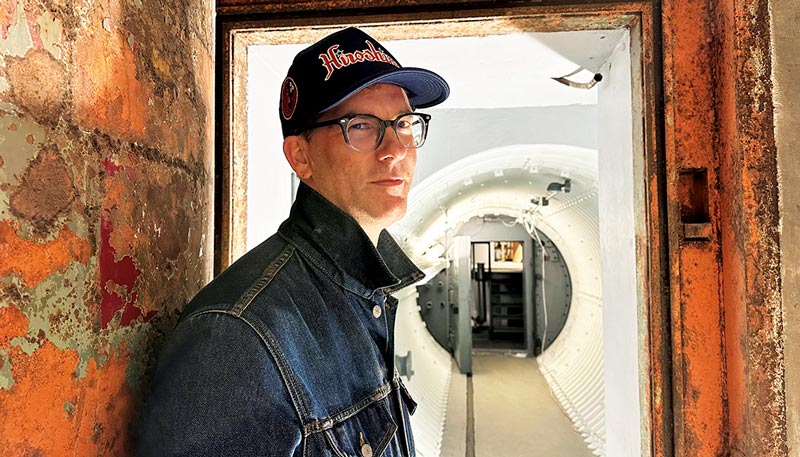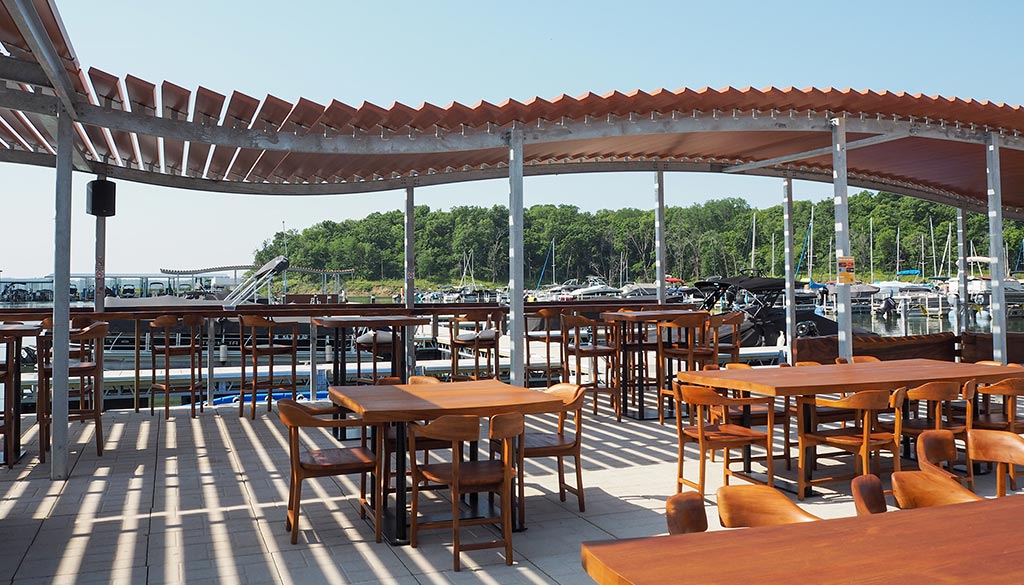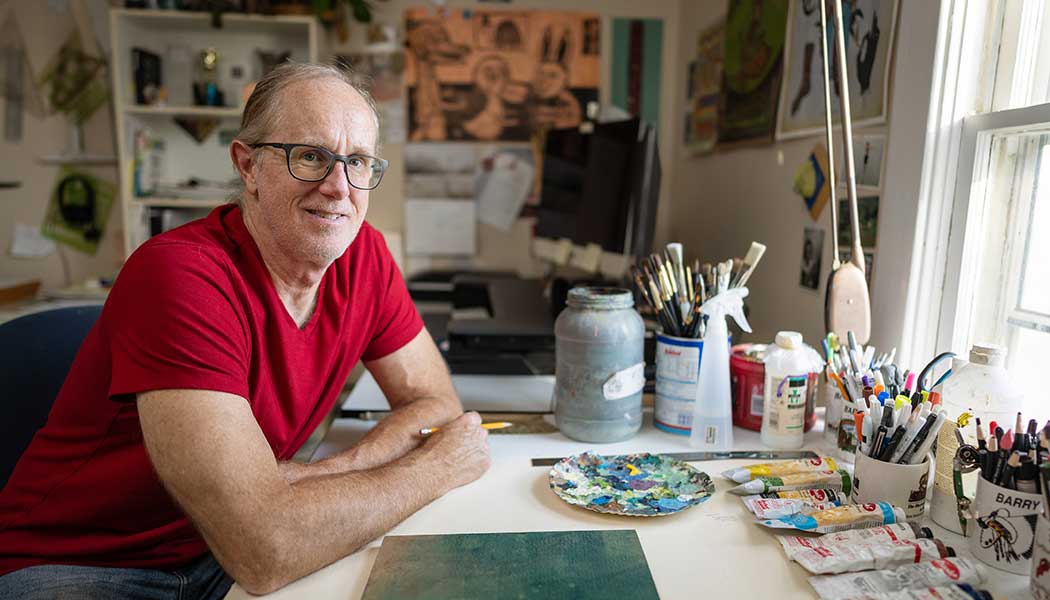Jomo Tariku’s African-inspired furniture
Designer adds modern twist to traditional cultural themes.
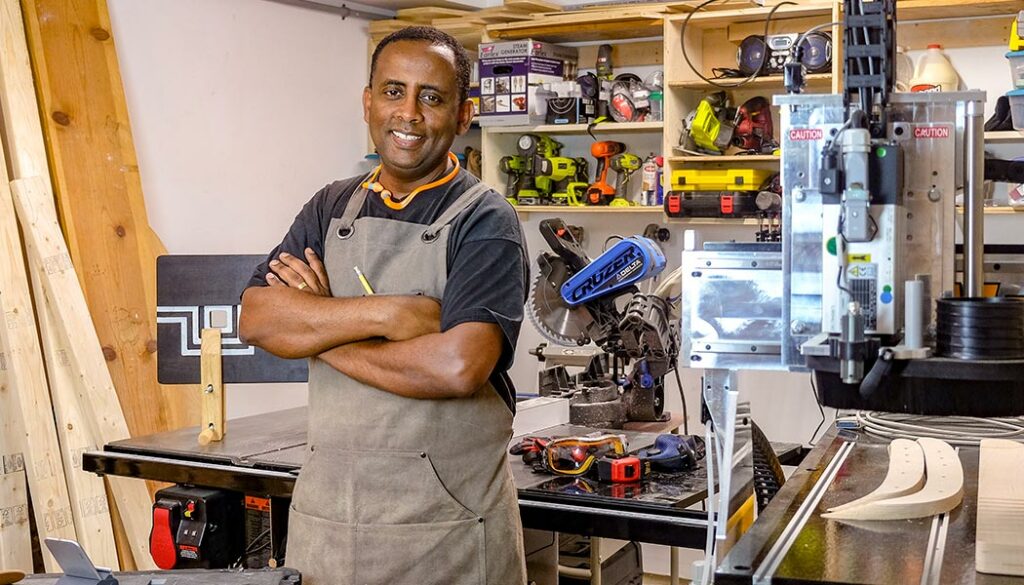
On a campus visit in 1987, Jomo Tariku had a chance meeting with a professor that changed his course in life.
Tariku was born in Kenya and grew up in Ethiopia; after finishing high school he moved to Olathe to attend MidAmerica Nazarene University with his brother.
“I wasn’t good at anything but drawing and sketching,” Tariku recalls, “and one of the professors said, ‘It looks like art is your passion: What are you doing here?’”
Exploring a transfer, he came to Mount Oread over summer break. Campus was nearly deserted, but he found Richard Branham, professor of industrial design, in his office. Branham invited him in and asked about his interests. Fine art, Tariku told him. Sketching and painting objects, not people.
“He said, ‘Have you looked into industrial design?’ I’d never heard of industrial design, let alone looked into it,” Tariku recalls with a laugh. “I said, ‘Please explain.’”
He quickly realized the mix of science, art and engineering that Branham outlined was exactly what he wanted to do.
Now a furniture designer, he recently launched his own studio and is gaining attention for his modern takes on traditional African themes.
“For me, design is really an interpretation of your culture, your heritage,” says Tariku, a’10, who lives near Washington, D.C., where he works as a data scientist for The World Bank. “It’s not just the lines and how you build it, it’s the color, it’s the things that have been passed on to you being reinterpreted into the objects you design.”
Among the pieces now attracting invitations to international design shows and showcases in design magazines are his Nyala chair, inspired by the horns of a South African antelope; the Ashanti stool, a reinterpretation of a traditional Ghanaian stool; and the MeQuamya chair, inspired by T-shaped staffs used in Ethiopian Orthodox church ceremonies.
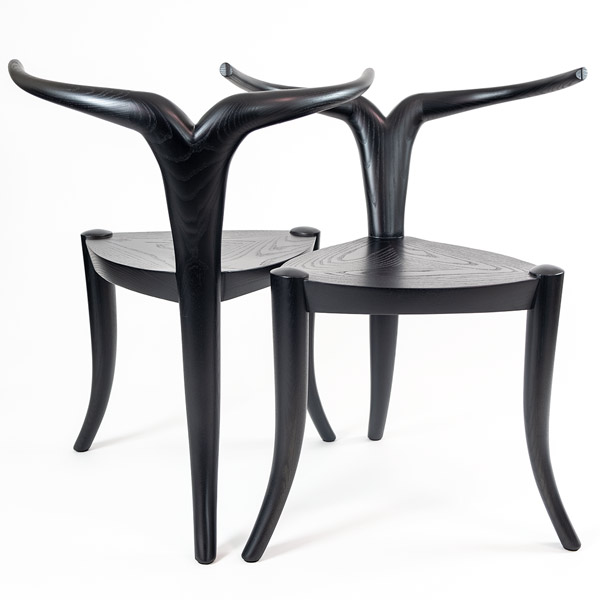
“In my home growing up, we had all these carved pieces, beads and masks and stools,” and that type of work is what most museums and galleries think of as African design, Tariku says. “But that’s not me, even though it is my inspiration.”
In addition to launching his own forward-thinking pieces, Tariku works to improve diversity in the design industry as a charter member of the Black Artists and Designers Guild. In April, he exhibited work and appeared on a panel at “Beyond the Mask: Storytelling in Black Art & Design,” the collective’s first exhibition at the influential High Point furniture market.
“The biggest obstacle is lack of name recognition, and we are on the way to accomplishing that for guild members,” Tariku says. “I have not seen this type of intensity around the work of black artists and designers, and I’ve been around for many years. It’s exciting to see.”
Steven Hill is associate editor of Kansas Alumni magazine.
/

